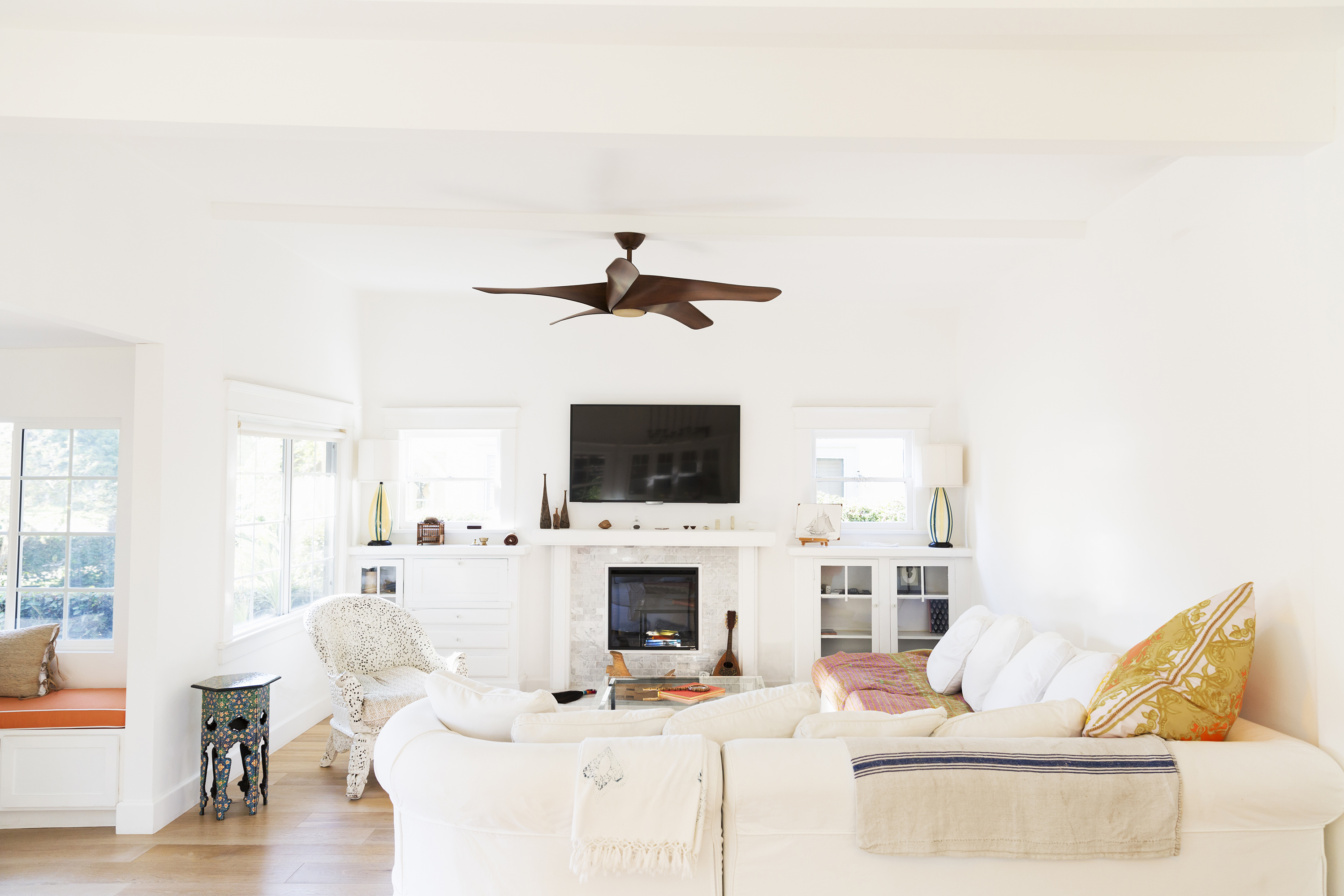Energy-Saving Ceiling Fans: Fact or Fiction?

As much as most of us love summer, there’s one big downside that comes with the heat: more use of air conditioning and fans equals higher utility bills.
If you have central air, you probably already know that the air conditioner is one of the most energy-hungry appliances in your home. It costs, on average, $0.36 per hour to operate – which accounts for about 25 percent of all home energy consumption.
So, what about using ceiling fans? Do they really help cool the home and lower air conditioning costs, or do new ultra-efficient HVAC systems make such fans unnecessary?
Let’s take a closer look at the benefits and drawbacks of ceilings fans.
Fact or Fiction: Ceiling Fans Are Low Cost
Fact. Compared to air conditioners, ceiling fans are downright cheap. The average cost of running a ceiling fan is about one cent per hour—a fraction of the cost to run an air conditioner.
So, it’s true, but…should you compare these two types of cooling? The answer is, no. That’s because ceiling fans don’t actually cool a room. Instead, they create a wind-chill effect that can make it seem cooler. They can also lower humidity levels, which makes the room more comfortable without actually lowering the temperature. Unfortunately, if the room is hot in the first place, a ceiling fan will do little to change the temperature.
Fact or Fiction: Ceiling Fans Make A Good AC Supplement
Fact. Ceiling fans can help save energy costs and increase comfort if they’re used in conjunction with an efficient air conditioner. With both your ceiling fans and AC operating, you can increase the thermostat by four degrees without losing any comfort. In turn, the air conditioner will come on less often, so your energy bills could be lower overall.
Fact or Fiction: Fans Are Not Just A Summertime Tool
Fact. (Sounds odd, but it’s true). As long as you have ceiling fans with reversible motors, ceiling fans can help save money in the wintertime. With the flip of a small switch found on the side of their motor housing, most ceiling fans can rotate in the opposite direction (clockwise). This reverse motion creates an updraft in the room, moving the hot air around without the wind-chill effect.
Fact or Fiction: Ceiling Fans Without LED Lights Aren’t Worthwhile
Fact and fiction. While it’s true that in general, ceiling fans can help lower energy use in your home, they can also require considerable energy to operate. How much depends on how the fans are used and the type of lights the fans include. Some fan lights can use more electricity than the fan motors themselves. In fact, the type of light a fan uses can account for up to 80 percent of your potential savings from a more efficient model. Be sure to select an ENERGYSTAR® LED lighting fixtures if you want to get the most energy savings out of your ceiling fans.
So, Are Ceiling Fans Worth the Investment?
Let’s do the math. An air conditioner costs $0.36 per hour, and a ceiling fan only $0.01 per hour. If air conditioning costs are lowered even by a few cents per hour, fans could still be worth it. On average, ceiling fans can help save four to eight percent on cooling costs when combined with an air conditioner.
If you live in a climate where you can use fans instead of air conditioning on marginally hot days, then ceiling fans could be a very worthwhile investment.
While ceiling fans provide better circulation of cool air and a wind-chill effect, they can still amount to wasted money and energy if no one is enjoying these benefits. For example, don’t:
- Install fans in rooms that aren’t used very often;
- Keep fans running after everyone leaves a room; and
- Turn on fans whenever the lights are on, even if the fan is not needed.
Interested in Getting Financing For Your Ceiling Fan or Air Conditioner?
It all depends on your unique situation. But there are tons of different home improvements you can make that could potentially reduce your energy consumption (and therefore, your monthly utility bill costs). Special financing – such as with PACE programs – can often help with the upfront cost of installing energy efficient-improvements like ceiling fans. PACE also covers energy-efficient windows and doors, solar panels, and over a hundred other types of projects. PACE provides upfront financing, and you pay for the project over time through your property taxes, while reducing your energy bills.
Larger upgrades, such as a new, more efficient HVAC system, also qualify for PACE financing. A new HVAC unit could reduce energy usage by 20-50 percent, depending on the age of the current system and the state of the thermostat, insulation, windows and doors in the home. So, while ceiling fans do provide energy-saving benefits, other improvements could actually be better investments. Ygrene can check your property's eligibility for PACE financing to help make these larger improvements (such as a new ENERGYSTAR-certified central air conditioner, for example). Click below to check your home's eligibility for Ygrene financing within five minutes!




